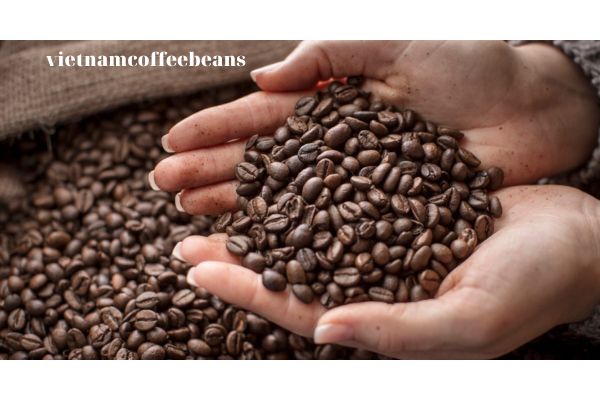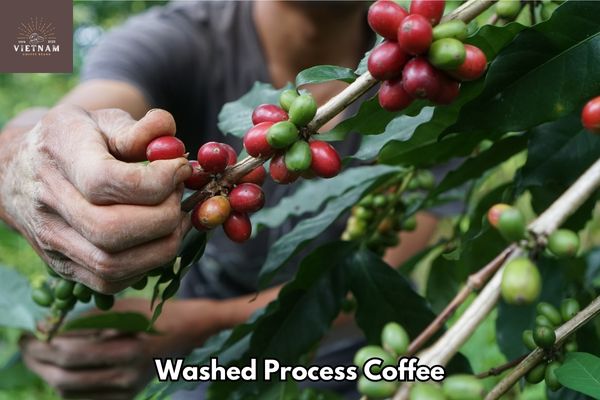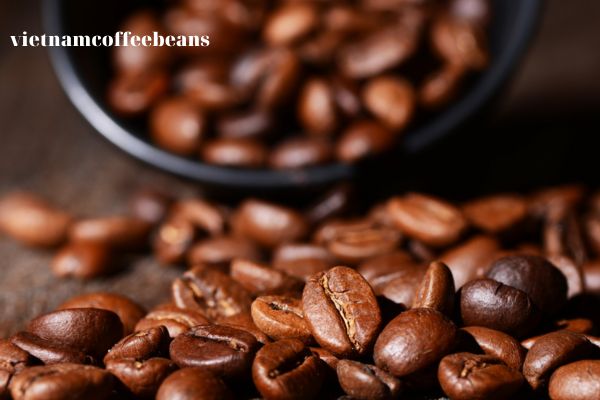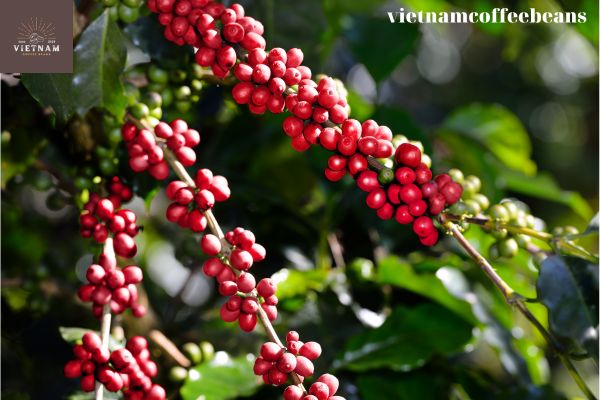As a coffee lover, I know how important it is to choose the right kind of coffee beans for that perfect cup of joe. With so many options out there, it can be overwhelming to know where to start. That’s why I’ve put together this guide on how to choose quality coffee beans.
When it comes to selecting coffee beans, there are several factors that come into play: origin, altitude, roast date, and more. Understanding these factors and how they affect the flavor of your coffee can help you make an informed decision when choosing your next bag of beans.
One of the first things to consider is the different varieties of coffee beans available in the market.
In this article, I’ll break down each factor and provide tips on how to choose quality coffee beans for your preferences. So sit back with a fresh cup of coffee and let’s dive in!

Choose Quality Coffee Beans: Understanding Coffee Bean Origin and Altitude
Now, you’re probably wondering where those little brown magic beans come from and how high they have to climb before they end up in your cup. Well, let me tell you – understanding the origin and altitude of coffee beans is key to finding your perfect brew.
Coffee farming practices vary throughout the world, and each region produces different tasting notes that are unique to their specific environment. The origin of coffee beans can affect their taste profile significantly.
For example, beans grown in South America are known for having a nutty flavor with chocolate undertones, while African coffee tends to be more fruity and floral. These differences arise due to the soil composition, climate conditions, and altitude at which these beans grow.
Altitude is particularly important because it influences how coffee cherries develop on trees; slower growth leads in denser beans with more nuanced aromas at higher elevations. Coffee growing procedures also have an impact on bean quality. Shade-grown agriculture, for example, helps protect forests and encourage biodiversity while producing higher-quality coffee than sun-grown types.
Understanding where your coffee comes from and how it was farmed can provide insight into its flavor profile as well as ethical considerations surrounding its production. So next time you’re shopping for beans, take a moment to consider their origins – it might just lead you to your new favorite cup of joe!
Factors Affecting Coffee Bean Flavor
You’ll want to pay attention to what affects the flavor of your coffee beans, so you can enjoy a truly delicious cup every time. Taste preferences are subjective and vary from person to person, but there are some general factors that can affect the taste of coffee.
One of these is processing methods. Coffee beans undergo different processes after being harvested, which can affect their flavor.
For instance, washed coffees undergo a labor-intensive process where its outer layers are removed before drying. This results in a cleaner taste with more acidity. Meanwhile, natural or dry-processed coffees retain their fruit pulp during drying, resulting in a sweeter and fruity taste profile.
Another factor that can affect coffee bean flavor is altitude. Coffees grown at higher altitudes tend to have brighter acidity and floral notes compared to those grown at lower elevations. The cooler temperatures and slower growth rate of high altitude regions result in denser beans with more complex flavors.
By understanding these factors affecting coffee bean flavor, you’ll be able to choose quality beans that suit your taste preferences better. It’s worth trying out different varieties and processing methods until you find one that matches your preferred taste profile.
The Importance of Roast Date
It’s crucial to pay attention to the roast date of your coffee, as this greatly impacts its flavor. Coffee beans begin to lose their freshness and flavor within two weeks after being roasted.
That is why it is essential to know when your coffee was roasted before purchasing or brewing it. Here are four reasons why you should always choose freshly roasted coffee:
- Storing coffee beans: Freshly roasted coffee beans require proper storage conditions, like keeping them in an airtight container away from heat, moisture, and light. If your beans have been sitting on a shelf for months without any care or attention, they will inevitably lose their taste.
- Identifying stale beans: Knowing the roast date helps you identify whether your coffee has gone stale or not. When the oils in coffee evaporate due to old age or poor storage conditions, the taste profile changes significantly.
- Full-bodied taste: Freshly roasted coffee has more natural oils that contribute to its full-bodied taste and aroma.
- More caffeine: The longer a bean sits around after roasting, the less caffeine it contains.
In summary, paying attention to the roast date is one of the most critical factors in choosing quality coffee beans. It will ensure that you get fresh-tasting coffee with a full-bodied flavor profile and maximum caffeine content possible.
Types of Coffee Bean Roasts
Exploring different types of coffee bean roasts can enhance your experience and give you a wider range of flavors to enjoy. There are three main types of coffee bean roasts: light, medium, and dark.
Light roast beans have a lighter color, body, and acidity level compared to the other two. They also retain more of their original flavor notes from the region they were grown in.
Medium roast beans have a balance between acidity and body, with slightly darker color than the light roast.
Finally, dark roast beans have a smoky flavor with low acidity levels but are less complex than the lighter roasts.

When choosing which type of roast to go for, it’s important to consider your brewing method and personal taste preference.
For example, if you prefer drip coffee or pour-over methods that highlight subtler flavors, then light or medium roast would be ideal for you. On the other hand, if you prefer French press or espresso methods that require more boldness in flavor then dark roasts would be best suited for your palate.
It is also important to note that proper coffee bean storage plays a significant role in maintaining quality regardless of the type of roast chosen. Coffee beans should be stored in an airtight container away from sunlight and moisture as they rapidly degrade when exposed to them.
By taking these factors into consideration when selecting your preferred type of coffee bean roast and storing them properly; you can ensure maximum enjoyment from every cup brewed at home!
Selecting the Best Quality Coffee Beans for Your Preferences
To truly enhance your coffee experience and reach new heights of flavor, it’s crucial to understand what satisfies your taste buds. When selecting the perfect roast, there are a few key characteristics to consider.
Aroma refers to the scent of the coffee beans and can range from sweet and fruity to nutty or earthy.
Acidity is often described as bright or tangy and can make your coffee taste more refreshing.
Body refers to the weight or texture of the coffee in your mouth, ranging from light-bodied to full-bodied.
Lastly, flavor intensity can vary greatly depending on how darkly roasted the beans are. You have learn how to store your beans properly to preserve their freshness and quality. One of the best ways to store coffee beans is to keep them in an airtight container in a cool and dark place.
When selecting quality coffee beans that fit your preferences, it’s important to consider which brewing methods you enjoy most. Different brewing techniques will bring out different flavors in your coffee.

Frequently Asked Questions
Conclusion
In conclusion, choosing quality coffee beans is essential for a delicious and satisfying cup of coffee. Understanding the origin and altitude of the beans, as well as the factors affecting their flavor, can help in making an informed decision. Additionally, paying attention to the roast date is crucial to ensure that you’re getting fresh beans.
When it comes to selecting the best quality coffee beans for your preferences, it’s important to consider your taste preferences and brewing method. Whether you prefer light, medium, or dark roasts, there are many options available on the market today.
Ultimately, finding high-quality coffee beans that align with your taste buds and brewing techniques will lead to a more enjoyable cup of coffee each day. By following these tips and taking time to research different brands and origins of coffee beans available for purchase, you can discover new flavors and find your perfect brew!
Learning how to read coffee bean labels, you can discover how to choose quality coffee beans that suit your preferences and make your coffee experience more enjoyable.
You may want to learn the advantages and disadvantages of pre-ground coffee for chossing the best option for you needs.
Hope you get useful information from the article, if you have any questions or want to read more articles, please visit the website: vietnamcoffeebeans.com
Thank you!






